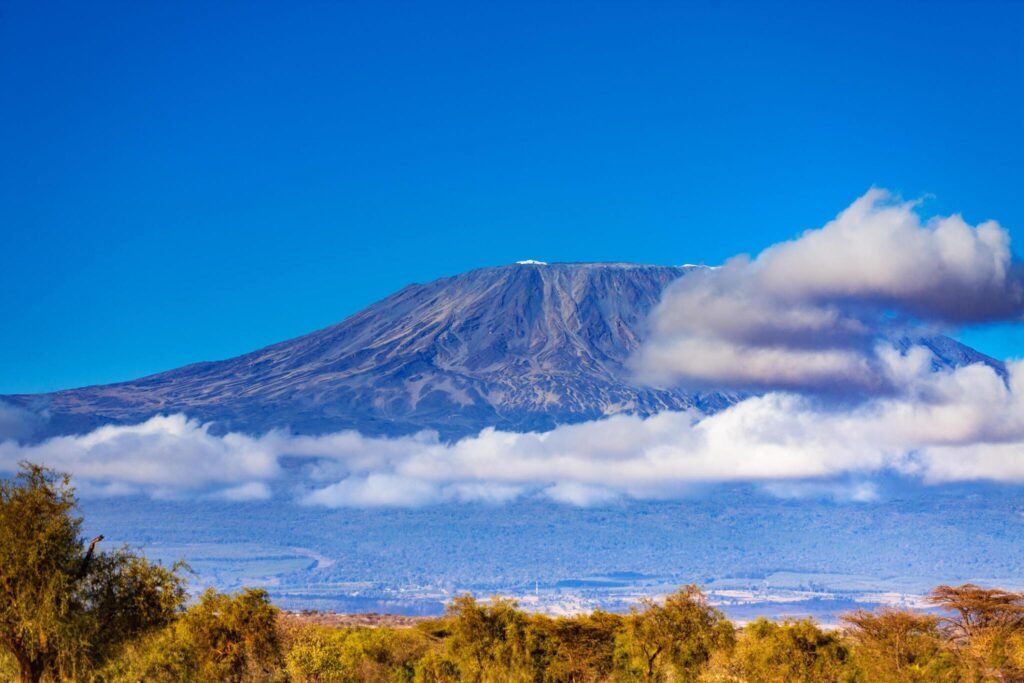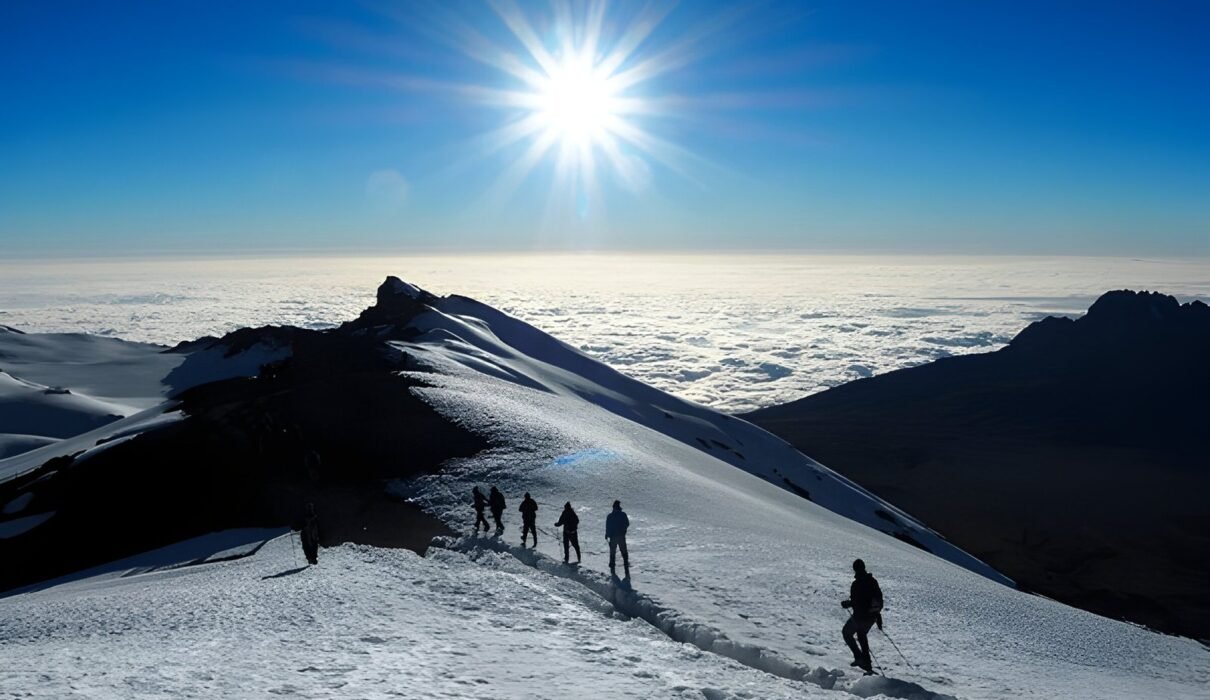Climbing Mount Kilimanjaro is a challenging yet rewarding experience. Standing at 5,895 meters (19,341 feet), Africa’s highest peak demands a good level of physical and mental preparation. Proper training is crucial to ensure you reach the summit safely and successfully. In this guide, we’ll provide you with everything you need to know about how to train for Kilimanjaro, from building endurance and strength to adjusting to altitude.

Why Training Is Important for Kilimanjaro
While climbing Kilimanjaro does not require technical mountaineering skills, the trek involves long days of hiking, steep inclines, and rapidly changing altitude. Without adequate preparation, even fit individuals may struggle due to the effects of high altitude or physical exhaustion. Training helps increase your stamina, strength, and ability to cope with the mountain’s challenges.
Learn more about Kilimanjaro preparation with Kilimanjaro Climb Specialist
1. Cardiovascular Endurance Training
Cardiovascular endurance is key when preparing for Kilimanjaro. You’ll be trekking for hours each day, and building your cardiovascular strength ensures you can handle the long distances.
Exercises to Focus On:
- Hiking: Regular hiking on different terrains will best simulate the conditions on Kilimanjaro. If possible, hike on steep hills or trails.
- Running: Running, especially on inclines, helps increase stamina. Aim for 30-45 minutes of running, three to four times per week.
- Cycling: Cycling builds leg strength and improves cardiovascular fitness without putting too much strain on your joints.
Training at least three months before your climb will give you time to gradually increase your fitness levels. Incorporate a mix of outdoor hiking and gym cardio sessions for the best results.
2. Strength Training for Kilimanjaro
Strength training is essential to help you carry your backpack and maintain balance on uneven terrain. While the porters carry the majority of your gear, you’ll still need to carry a daypack with essentials such as water, snacks, and extra clothing.
Focus on the Following Muscle Groups:
- Legs: Strong legs are crucial for climbing steep inclines. Include exercises like squats, lunges, and step-ups in your routine.
- Core: A strong core helps with balance and stability on rough terrain. Planks, mountain climbers, and leg raises are great for building core strength.
- Upper Body: While climbing Kilimanjaro doesn’t require rock climbing, a strong upper body will help when using trekking poles. Exercises like push-ups and shoulder presses can build strength.
A well-rounded strength training program should be done two to three times per week, focusing on these muscle groups to help prevent fatigue and injury.
Learn more about strength training for hiking
3. Hiking with a Loaded Backpack
One of the most effective ways to train for Kilimanjaro is by hiking with a loaded backpack. This simulates the actual trek and helps you get used to carrying weight while walking for extended periods.
Tips for Training with a Backpack:
- Start with lighter loads (around 5-7 kg) and gradually increase the weight as you progress.
- Practice on hilly terrain to simulate the climbs you’ll experience on Kilimanjaro.
- Increase your hiking duration over time, starting with 1-2 hours and working up to 5-6 hours on consecutive days.
Make sure your backpack is comfortable and properly fitted to avoid strain on your back and shoulders.
Find out how to prepare for backpacking trips
4. Acclimatization and Altitude Training
One of the most challenging aspects of climbing Kilimanjaro is coping with altitude. The higher you go, the thinner the air becomes, making it harder for your body to get the oxygen it needs. Altitude sickness can affect anyone, regardless of fitness level, so preparation is key.
Tips for Acclimatization:
- Train at high altitudes: If you have access to high-altitude environments, use them to prepare. If not, you can use altitude training masks or visit altitude training centers.
- Climb high, sleep low: Acclimatization strategies like “climbing high and sleeping low” help your body adapt more gradually to the altitude.
- Stay hydrated: Drinking plenty of water helps reduce the effects of altitude sickness.
Learn more about altitude training with Eddy Tours Safaris
5. Flexibility and Balance Training
The terrain on Kilimanjaro can be uneven and rocky, requiring good balance and flexibility to avoid injury. Incorporating flexibility and balance exercises into your routine helps prevent sprains, strains, and falls.
Exercises to Improve Flexibility and Balance:
- Yoga: Yoga improves flexibility, balance, and mental focus, all of which are essential for a successful Kilimanjaro climb.
- Stretching: Regular stretching of your legs, hips, and back will prevent stiffness and improve your range of motion.
- Balance Exercises: Simple exercises like standing on one foot or using a balance board can help improve stability on uneven surfaces.
Consider adding a yoga class or daily stretching routine to your training plan to help your body stay limber and prepared for the unpredictable terrain.
Get started with a hiking yoga routine
6. Mental Preparation for Kilimanjaro
While physical fitness is critical, mental strength is equally important when climbing Kilimanjaro. The altitude, weather, and physical demands of the climb can take a toll on your mental state. Staying motivated and keeping a positive mindset is key to reaching the summit.
Tips for Mental Preparation:
- Set realistic goals: Prepare yourself mentally by setting achievable milestones during your climb.
- Visualize success: Visualize reaching the summit and how it will feel to complete the journey.
- Stay positive: When the trek gets tough, focus on the progress you’ve made rather than the challenges ahead.
Sample Training Plan for Kilimanjaro Climb
To help you get started, here’s a sample 8-week training plan for Kilimanjaro:
Weeks 1-2: Foundation
- Hiking: 2-3 times per week for 1-2 hours.
- Strength Training: 2 times per week (focus on legs, core, and upper body).
- Cardio: 30 minutes of running or cycling, 2 times per week.
Weeks 3-4: Build Endurance
- Hiking: 3 times per week for 2-3 hours, add a backpack (5 kg).
- Strength Training: 2-3 times per week.
- Cardio: 45 minutes of running or cycling, 3 times per week.
Weeks 5-6: Increase Intensity
- Hiking: 3-4 times per week for 4-5 hours, backpack (8 kg).
- Strength Training: 3 times per week.
- Cardio: 60 minutes of running, 3 times per week.
Weeks 7-8: Peak Preparation
- Hiking: 4 times per week for 5-6 hours, backpack (10 kg).
- Strength Training: 3 times per week.
- Cardio: 60 minutes of intense cardio, 4 times per week.
This plan is a general guideline and should be adjusted based on your fitness level and time available.
Explore detailed Kilimanjaro training programs
FAQs About Kilimanjaro Training
1. How long should I train for Kilimanjaro?
It’s recommended to start training at least 3 to 4 months before your climb to build up endurance, strength, and stamina.
2. Can beginners climb Kilimanjaro?
Yes, beginners can climb Kilimanjaro with the right preparation. While no technical skills are required, a solid training program is essential for success.
3. Is altitude training necessary for Kilimanjaro?
While it’s not essential, training at high altitudes or using altitude simulation techniques can significantly improve your ability to handle the conditions on Kilimanjaro.
Start Your Kilimanjaro Journey Today
Climbing Kilimanjaro is a life-changing experience, and proper preparation ensures you’ll have the best chance of reaching the summit. With the right balance of endurance, strength, and mental readiness, you can confidently tackle the challenges of this iconic mountain.
Get expert advice and start planning with Kilimanjaro Climb Specialist
Book your Kilimanjaro trek with Eddy Tours Safaris

